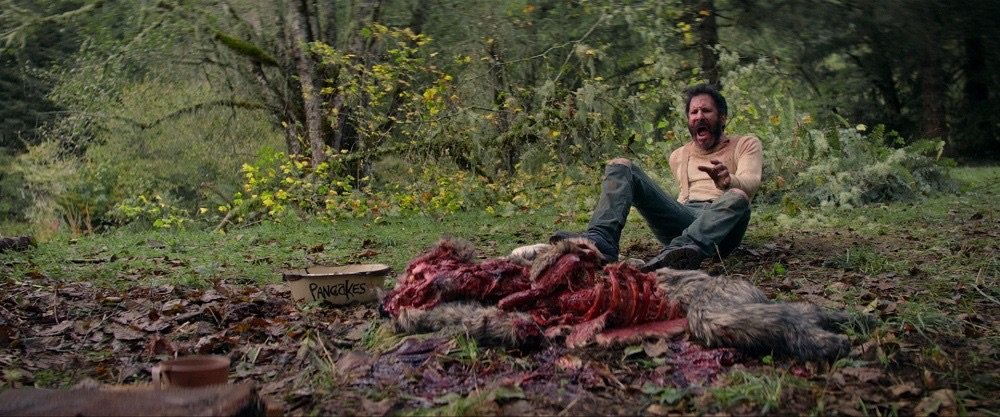

Look no further than when the bratty outsiders encounter slightly hostile locals when shopping for supplies, as the once offbeat-but-menacing Tommy ( Hal Courtney) is now overplaying these oafish lines in dour-sour serious fits of “anger” ( Aaron Trainor). Zariwny goes for the “dark, gritty” reboot vibe, but 2016’s film still leaves all of Roth’s jokey written elements intact without sufficient tweaks. What’s important to remember, and what a rewatch of Roth’s Cabin Fever reminds, is how the original is written to be an early 2000s horror-comedy. Mambo looks meaner this time.” In better hands, maybe you’d have something as starkly ravenous and singularly evil in comparison such as Fede Alvarez’s Evil Dead to Sam Raimi’s horror classic. Zariwny’s implied reasoning behind his “essential” Cabin Fever rebirth boils down “let’s make it more serious…and Dr. After this weekend’s back-to-back refresh, a nauseating case of déjà vu left me fifty shades of infuriated. When I watched Cabin Fever (2016) upon initial release, years after sweating out Roth’s itchy backwoods outbreak, frustration bubbled due to disparaging familiarity. “We already have Cabin Fever, do we really need another one?” In this case, based on Zariwny’s phoned-in blueprint, I have no combative retort. A black eye that justifies outraged moviegoers who foam at the mouth whenever a new remake is announced. In short, Cabin Fever 2.0 is the antithesis of remake culture.
CABIN FEVER 2002 MOVIE
You’ll recognize just about every single narrative twist and plotted pivot because you’ve seen this movie already. Once again, Paul ( Samuel Davis) and his friends panic while quarantine protocols fail, flesh peels from muscle, and rednecks hunt the group as a means of extermination. Once again, a loner hermit contracts some flesh-eating virus that ends up tainting drinking water supplies. Once again, horned-up college students flee from civility to their cabin in the woods. A problematic ratio that brings us right back to my first question, “Why?”

Zariwny’s iteration of Cabin Fever ain’t all that different from Roth’s. Roth is quoted citing “significant changes” supposedly after he screened Zariwny’s first cut, but that’s a mouthful of toxic reservoir runoff. That means the remake’s approach is quite simple: reshoot a mirror image replica. Roth agreed, attached himself as an executive producer, and thus Zariwny’s experiment in challenging remake culture was underway.Įli Roth and co-writer Randy Pearlstein retain sole scripting credits on Zariwny’s renovation.

Their catch? Roth’s original script would be used once again. Are you modernizing a decades-old antique? Swapping gender perspectives? Americanizing a foreign powerhouse? Countless revisionist reasons prevail as to why filmmakers would attach themselves to yet another remake, but Travis Zariwny’s Cabin Fever (2016) will forever remain a most peculiar outlier.Īs the story goes, Eli Roth was approached by Zariwny and others with the prospect of remaking Cabin Fever. With the announcement of any remake, horror or not, follows one critical question: “Why?” I’ll never gripe a film isn’t “necessary” – no film, by definition, is “necessary” – but intentions behind remakes are massively fundamental. The good, the bad, the unnecessary – Matt’s recounting them all. We all complain about Hollywood’s lack of originality whenever studios announce new remakes, reboots, and reimaginings, but the reality? Far more positive examples of refurbished classics and updated legacies exist than you’re willing to remember (or admit). Welcome to Revenge of the Remakes, where columnist Matt Donato takes us on a journey through the world of horror remakes.


 0 kommentar(er)
0 kommentar(er)
